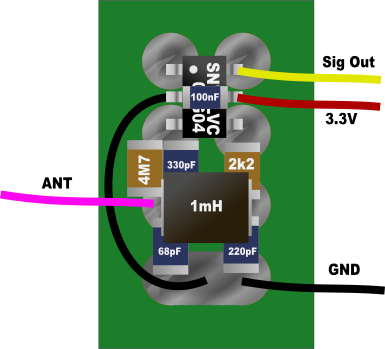"Yes. With the STM32 and e.g. 400kHz oscillator frequency with 8 bit prescaler I would have every 50kHz/20µs a new pitch value to walk through the wavetable. So more or less the same frequency as the sampling frequency." - gerd
One thing to watch out for is a pitch value update that is near, but not exactly, the audio sampling (PCM) rate, which can cause sampling and alias problems. This is why I run the oscillator update rate at a multiple of the PCM (~196MHz), then downsample and filter via second order CIC. A high oscillator update rate means noise picked up by the antenna below 1/2 this rate won't alias into the pitch value (if properly filtered) and I can use a relatively low order filter to resample the update rate at the PCM rate.
"And with FPU and DSP instructions. In a former project I've realized a PID controller in a 1µs task, using float point arithmetic."
I'm sure you've got enough processor there to do Theremin C sensing and voice generation. As I'm sure you know, the question is what additional hardware is necessary to sufficiently unburden the processor. For the soft processor in my FPGA I use extra FPGA hardware to buffer and drive the LC oscillators, pitch display, LCD, encoders, SPDIF, SPI, UART, etc. leaving minor filtering tasks to the processor assembly code. The 8 threads are almost entirely free to do linearization, offset, voice generation, UI, etc.
"There is a CS43L22 audio DAC on-board. Stereo, 24bit, 96kHz. The micro itself has a 12bit DAC. I think it would be suitable for some debug purpose, e.g. I could map the antenna frequency on this DAC and could see if there is 50/60Hz noise to adapt some kind of notch filter."
Ah, sorry, I should at least have caught that! If the 12 bit A/D D/A work past 10MHz or so you could drive/sense the LC tank with them, but I don't think these do? Beyond that I can't think of a use for them.
Custom hardware in an FPGA makes the most sense to me. (I know I'm an FPGA guy so I tend to pull out that hammer for every nail I encounter, but in this case I'm pretty sure it's true.) FPGAs have a hell of a learning curve, but there's absolutely nothing like having an ocean of configurable logic at your fingertips. You could likely do what you need to do with a <$20 Cyclone demo board. I've already developed all the Theremin-based SystemVerilog code you would need for it.


